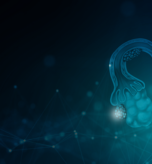MR Amit Aggarwal (35 yrs.) and MRS Laxmi Aggarwal (32 yrs.) were trying for a second baby for the last 5 years. They have been married for 8 years and have a 7-year-old healthy daughter.
They did not face any difficulty in conceiving their first child but were perplexed about why they were unable to conceive now.
A detailed history was taken, and they underwent relevant fertility tests. All investigations revealed that the wife had normal blood reports, ultrasonography, and ovarian reserve. However, the semen analysis showed a low sperm count with poor motility along with a high DFI. The husband was diagnosed with a palpable varicocele, confirmed with a USG of the scrotum and Doppler study. His hormonal blood tests were normal.
The couple was informed about the option of varicocele surgery and/or ICSI–TESA, and the pros and cons were discussed with them.
—
What is Varicocele?
Varicocele is a condition where veins in the scrotum become enlarged, leading to a decrease in sperm production and motility. Due to an adverse environment, these sperms can also undergo DNA fragmentation. In long-standing cases, it may also lead to azoospermia (nil sperm count)**.
—
Advice Offered at Nova IVF Fertility
Infertility affects about 8-12% of couples worldwide, with male infertility contributing around 20-30%.
After a detailed discussion with the couple, the option of varicocele repair and/or assisted reproductive techniques was explained. Since the husband had Grade 3 varicocele with normal hormonal reports, they decided to proceed with varicocelectomy.
Surgical varicocelectomy improves sperm parameters and pregnancy rates. It is considered a primary option in men with suboptimal semen parameters, especially when the female partner has correctable fertility factors.
After the treatment, semen analysis was performed every 3 months to monitor improvement. However, the improvement was marginal, so the decision was made to proceed with PESA–ICSI.
—
What is PESA?
PESA (Percutaneous Epididymal Sperm Aspiration) is a technique where sperms are aspirated from the testis using a needle under short-duration anesthesia.
While testicular sperms may have lower motility, they have lower DNA fragmentation and can be used for injecting into the cytoplasm of an egg, resulting in fertilization and increased chances of successful conception and delivery.
Both partners were given antioxidants and advised lifestyle modifications.
—
Successful IVF Cycle
The IVF cycle was done, and an optimal number of good-quality embryos were formed after PESA-ICSI. All the embryos were frozen. The wife underwent the first frozen embryo transfer with a single blastocyst, which was successful.
The pregnancy journey was uneventful, and the couple was blessed with a healthy baby. They are overjoyed to have completed their family.




